Travel
Understanding the world of cathedrals: financing a cathedral
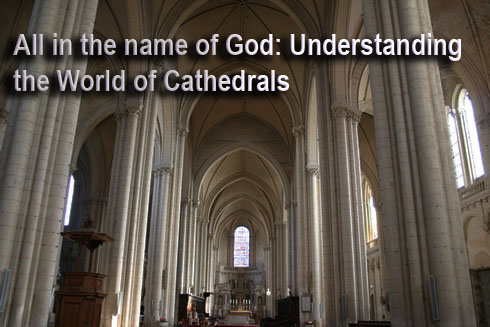
Once the project was commissioned, it had to be financed. The chapter of canons, an assembly of priests responsible for dealing with anything linked to the world of cathedrals, made the budget and managed the money.
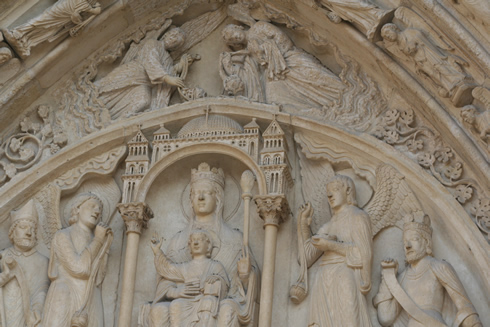
Portal Saint Anne, Notre Dame of Paris Cathedral (France)
Finding the funds
They did their best to always have some funds available in advance. But building a cathedral required so much money that the work was compared to a “financial abyss”. Money was needed for the workers’ pay, the materials, the tools, the carts, renting a quarry, buying animals and feeding them and for the food and clothing of the workers. The list goes on and on.
About the stones
The cathedrals were constructed from carved stones. In order to make the carving process easier, quarries were necessary. Carving was done on the large pieces in underground or open pit mines. The stones were all standardized to reduce the cost and to always have the same size. Each stone had a mark so the workers would know where it should go as soon as they returned to the cathedral site.
Whenever possible local quarries were used but it was not always the case. The stones (sandstone, limestone, granite, marble, etc…) were either delicate or rough depending on the region. In Italy, one used a lot of marble and in South of England and Northern France some limestones. Sandstones were used for the Cathedral of Durham in North East England. Architects always wanted good quality stones and imported them by boat when needed. The stone of Caen (a very strong limestone) in Northern France was particularly beloved and it was shipped all away to the construction site of the Canterbury and Norwich cathedrals in England. This cost money and time.
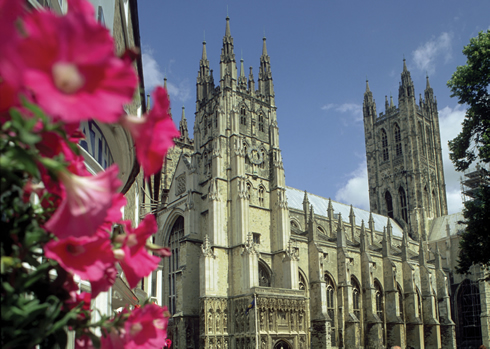
Canterbury Cathedral (England)
Courtesy photo of Canterbury City Council’s Tourism Dept – Tim Stubbings
Transporting the stones
Animals such as horses and cows were used to haul stones and materials to the cathedrals site. Transportation was a long process as only one stone at a time could be transported and done with large carts.
Needless to say that everyone had to be involved in the funding: the church, the bishops, the royal and noble families and the town people.
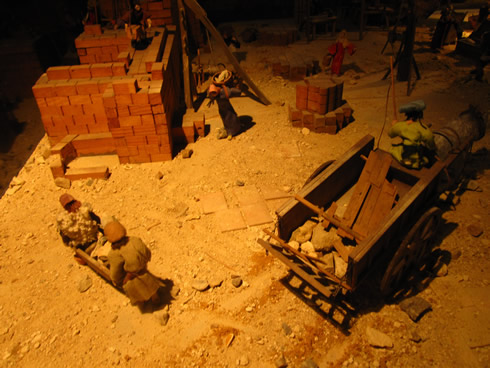
Workers transporting stones – Exhibit in Notre Dame de Paris
Where the money came from
First of all, the bishops brought their own money. Bishops in those days came from very powerful and rich families, this is why bishops owned estates, known as domains. Each domain generated significant amount of money every year. Bishops were quite healthy. Some bishops owned numerous estates. An Italian Bishop of Bologna is believed to have owned more than 2000 of them.
The canon participated too, especially starting in the 13th century. At this time the pope asked the clergy and bishops for more financial help as before.
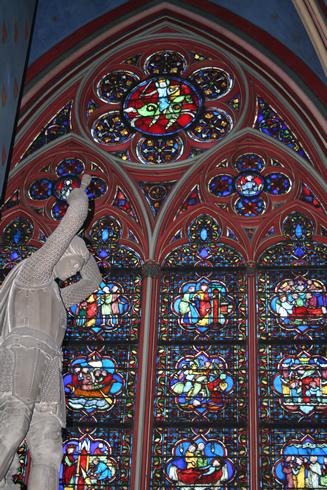
Stain glass window, Notre Dame of Paris Cathedral
About the contribution
What people contributed was various. Some gave money, while others donated materials, food, jewelry, clothes or their own time. For instance, princes and royal families let the workers use their quarry or/and forest.
Having a forest at one’s disposal was important, as many trees were needed for supporting the construction and for carpentry work. Sometimes trees were donated instead of the right to exploit the forest.
Other kings, craftsmen and guilds donated stain-glass windows; one thanked them by portraying them on a painting or on a stain-glass window somewhere in the cathedral. It is said that the kings of England and Spain gave generous donations unlike the French kings, whose participation was rather sparse, if compared to other royal families.
Indulgences
But most of all, the church counted on the town’s people to finance the project. There were many ways to get money out of them. Collecting in church and in the city and by going to neighboring villages by walking around and asking for donations. Another means was selling indulgences. Bishops would sell pieces of paper, known to liberate the people from their sins. With one in the hand, the sinner would no longer be punished and could go to heaven.
At the cathedral Saint Pierre of Poitiers in France, the pope intervened at the end of its pconstruction to gather funds. He “gave spiritual favors to all believers who would give alms in return” writes father Auber, Abbot of the St Pierre Cathedral in the 19th century.
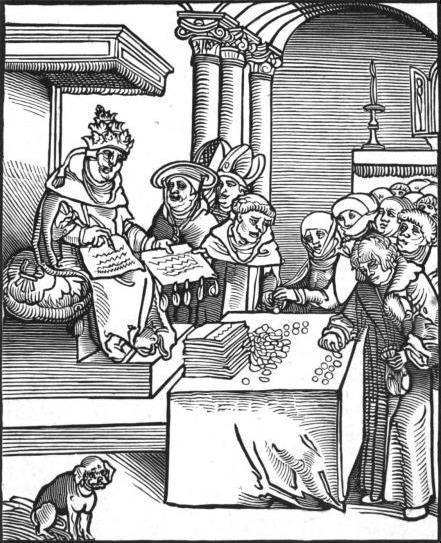
Lucas Cranach the Elder – Pope selling indulgences
Pilgrimages and relics
In the middle Ages, the church organized pilgrimages to shrines to help finance cathedrals. It is believed to have been a lucrative way to collect funds. Groups of pilgrims would leave their hometowns to go on tours: they would go visit cathedrals’ relics; strongly believing it would cure them. Bishops would make the pilgrims pay.
Some canons toured with their relics, hoping to make a fortune. However, according to the French medieval Historian Gimpel, after the 1215 council, it slowed down due to abuse. It was decided that bishops and abbots would not be able to write as many indulgences as before. The council made it difficult for them.

